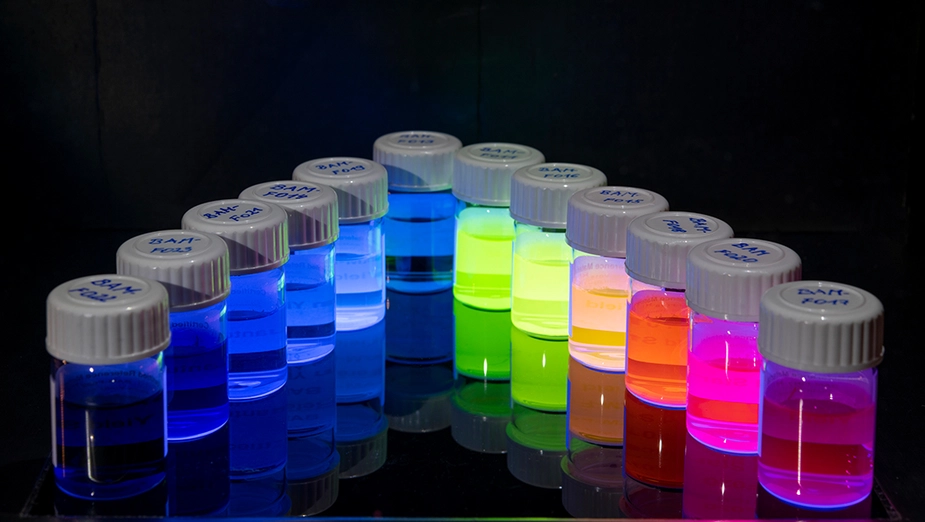BAM develops new standards for the surface analysis of nanoparticles
New EU project launched for greater security in the use of nanoparticles
In a new EU project, the Bundesanstalt für Materialforschung und -prüfung (BAM) is developing standardized measurement methods for investigating the surfaces of nanoparticles. The goal is to further improve the functionality and safety of nanoparticles.
Due to their tiny size of one to 100 nanometers, nanoparticles have unique properties, such as an enhanced chemical reactivity or special electronic and optical properties. These features make them indispensable for numerous technologies and products – from paints and cosmetics to solar cells, plasma displays, batteries, and reporters for medical diagnostics.
The challenge of nanoparticle surface chemistry
Although there are already standardized methods for determining particle size, there are still no established methods for determining and quantifying the surface chemistry of nanoparticles. The surface plays an important role for the interaction of nanoparticles with their environment. It largely controls their solubility, stability and tendency to form larger particle assemblies. These factors are crucial for the functionality and safe use of nanoparticles in various applications.
International cooperation for greater security
“In the SMURFnano project, methods and test and reference materials are developed and validated to reliably measure the function and coating of nanoparticles,” explains Ute Resch-Genger, coordinator of the project at BAM. “These methods are of crucial importance both for research on the next generation of safer nanomaterials with an improved performance and sustainable and safe-by-design concepts as well as for quality control in industrial production. By developing international standards, such as ISO and CEN, as well as developing and validating simple and cost-effective analytical methods, the project will help to increase the confidence in products containing nanoparticles and ensure their safe use worldwide.”
BAM is significantly involved in the development of new measurement methods, the implementation of international interlaboratory comparisons for the validation of the methods and their standardization and the provision of test and reference materials. Leading research institutions and companies from Europe are jointly working on the project, including RI.SE (Sweden), INRiM (Italy), the National Physical Laboratory (UK), the Jozef Stefan Institute (Slovenia), the Physikalisch-Technische Bundesanstalt (Germany), Evonik (Germany), the University of Vienna (Austria) and other international partners.
Knowledge transfer and workshops
BAM offers webinars and workshops to share the knowledge acquired in the project. Via the Nano@BAM competence center and the BAM Academy, interested parties can also gain insights into various measurement methods, for example optical assays, X-ray photoelectron spectroscopy (XPS) and OECD Test Guideline 124 and 125. These programs are available online at any time and can be accessed free of charge after registration. Test materials for method establishment and validation can be obtained from the SMURFnano consortium on request.
Further information
- SMURFnano: Standardised measurements of surface functionalities on nanoparticles , Project
- BAM Akademie
- Competence Center Nano@BAM , Materials
Contact:
Dr. rer. nat. Ute Resch-Genger
Bundesanstalt für Materialforschung und -prüfung
Head of Division: Biophotonics
+49 30 8104-1134
Ute.Resch(at)bam.de
Dr. rer. nat. Jörg Radnik
Bundesanstalt für Materialforschung und -prüfung
Division: Surface Analysis and Interfacial Chemistry
+49 30 8104-4548
joerg.radnik(at)bam.de
Press release BAM, 5 November 2024
